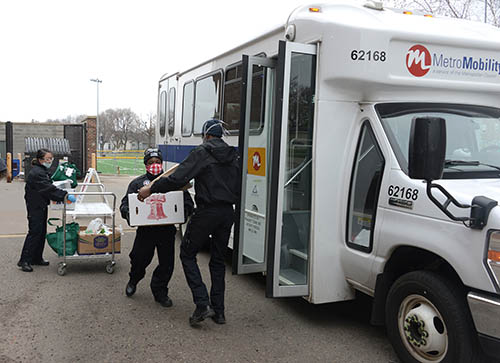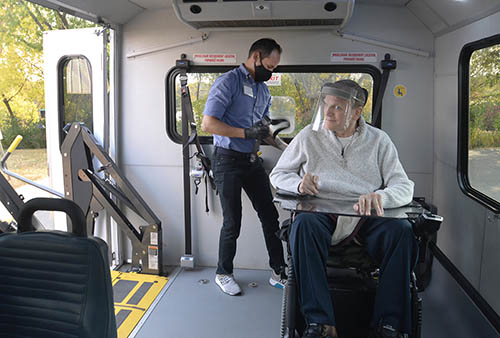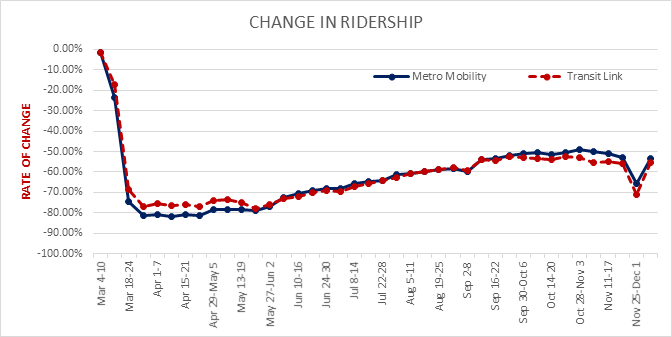Staff across the Met Council have gone the extra mile over the past nine months in response to the COVID-19 outbreak.
Among these staff are the Metro Mobility and Transit Link teams, whose efforts have been extraordinary. When COVID-19 first surfaced and the stay-at-home orders went into place, traditional rides on Metro Mobility and Transit Link immediately dropped as customers complied with the order.
“This presented both a problem and an opportunity for these essential services,” said Metro Mobility Senior Manager Christine Kuennen. “The problem was that we had vehicles and bus operators who are crucial to serving our customers who were suddenly idle. The opportunity that staff found, in partnership with our contractors and county mobility management coordinators, was to set in motion new services that would serve the community.”

Pivoting to broaden essential services
Regular riders started to come back in July, but both Transit Link and Metro Mobility continue to provide grocery and goods delivery for our customers, food shelf delivery, as well as deliver essential health workers to their jobs. Here are some striking statistics from 2020: more than 33,000 food deliveries, and nearly 158,000 essential health care worker trips.
To be able to execute these new service lines, between Met Council staff and contractors, it meant that all hands were on deck. While staff’s “normal” work may have subsided, new responsibilities and extra hours came into play to provide these critical services. For example, Metro Mobility Service Center staff have taken on the role as key contact tracers.
“Through the first few weeks of launching new services, Customer Service Specialists agreed to work nights and weekends to care for customers and their questions in a time of crisis,” said Metro Mobility Customer Service Manager Andy Streasick. “And, while our call volumes initially dropped in March by more than 65 percent, they’ve rebounded and are now down only about 8 percent.”
No one contacted through contact tracing has been symptomatic, speaking to the safety protocols and service adjustments made in the early weeks, as well as the messaging to customers about essential trips and the face-mask requirement.

Contractors, counties, and staff working together
These shifts have also enriched the relationship among staff, contractors, and counties. Communication and cooperation are fundamental as everyone shares resources and information, and support each other through the changes.
“Early on, food shelf deliveries were done by Metro Mobility providers,” said Contracted Transit Services Manager John Harper. “Those deliveries were transitioned to several Transit Link providers over time to ensure we balanced contractors’ work as Metro Mobility demand increased. This required the coordination of contractors, internal staff, and county mobility managers to ensure no food shelves were left behind.”
Metro Mobility and fixed-route contractors also coordinated closely during the response to the civil unrest.
“Since the beginning of the outbreak, we’ve been able to put in place a compensation structure that pays contractors for COVID-related work,” said Kuennen. “This is all while the First Transit East Garage moved facilities from Roseville to Saint Paul and the South Zone transitioned to a new provider.”
Metro Mobility and Transit Link regular ridership has returned to about 50 percent of pre-COVID ridership. The chart below shows that trips have been steadily climbing since the stay-at-home order was lifted in early June. Metro Mobility customers are still encouraged to use Metro Mobility for essential trips only.
